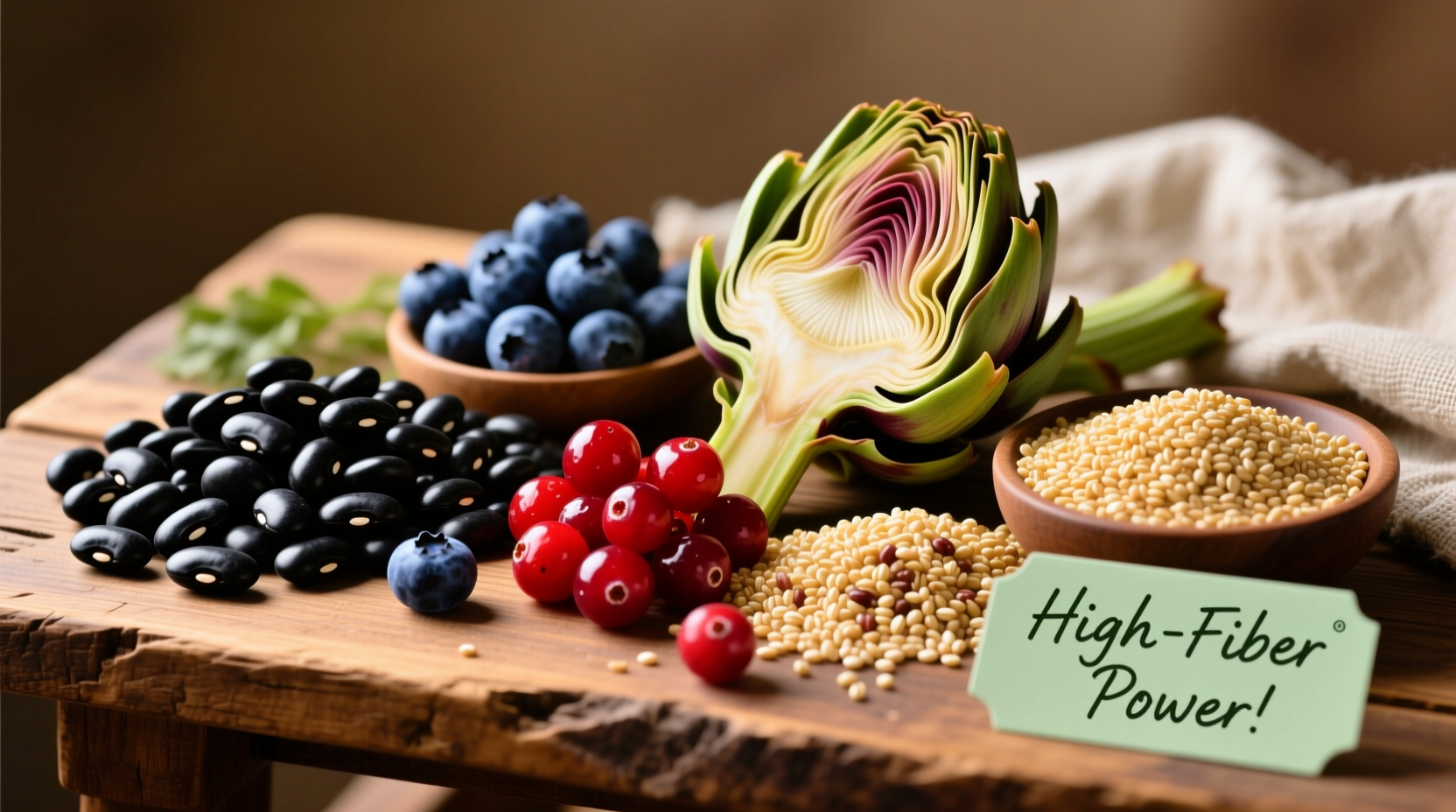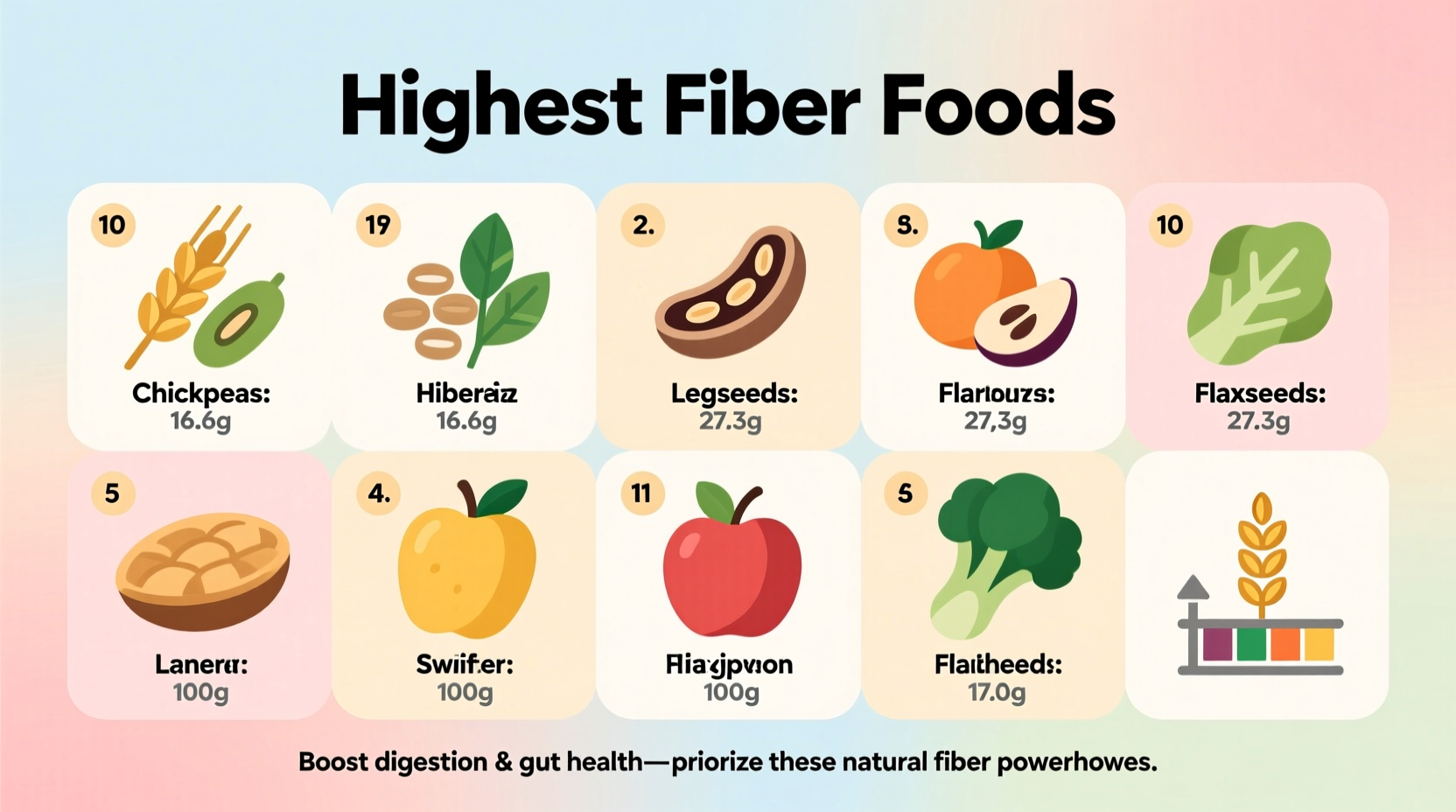Discover the top high-fiber foods that deliver maximum digestive benefits: split peas (16.3g per cup), lentils (15.6g), black beans (15.0g), raspberries (8.0g per cup), and artichokes (10.3g each). These powerhouse foods provide 30-65% of your daily fiber needs in single servings, backed by USDA nutritional data.
Why Fiber Fuels Your Health (Beyond Digestion)
While most search for what foods are highest in fiber to relieve constipation, the benefits cascade through your entire system. High-fiber diets reduce heart disease risk by 30% according to American Heart Association research. Soluble fiber from foods like oats and beans actively lowers LDL cholesterol, while insoluble fiber in whole grains prevents blood sugar spikes. Crucially, these effects require consistent daily intake—not quick fixes.
Your Daily Fiber Target: Science-Based Guidelines
Forget generic "eat more fiber" advice. The Dietary Guidelines for Americans specify precise targets based on age and gender:
| Demographic | Daily Fiber Goal | Top Food to Hit Target |
|---|---|---|
| Women under 50 | 25g | 1 cup black beans + 1 medium pear |
| Men under 50 | 38g | 1 cup lentils + 1 avocado + 1 cup raspberries |
| Adults over 50 | 21-30g | 1 cup split peas + 2 slices whole-grain bread |
Top 10 Highest Fiber Foods: Nutritional Breakdown
These rankings prioritize fiber density per calorie—critical for weight management. All data comes from USDA FoodData Central standard servings:
- Split peas (16.3g/cup cooked): Ideal for soups. Unlike canned beans, they require no added sodium. Pro tip: Cook with turmeric to boost anti-inflammatory effects.
- Lentils (15.6g/cup cooked): The only high-fiber food with significant plant-based iron (37% DV). Red lentils cook fastest for beginners.
- Black beans (15.0g/cup): Contain resistant starch that feeds gut bacteria. Key limitation: Soak overnight to reduce gas-producing compounds.
- Artichokes (10.3g/medium): Highest in inulin—a prebiotic fiber. Steam whole with lemon to preserve nutrients.
- Raspberries (8.0g/cup): Top berry for fiber-to-sugar ratio. Frozen varieties retain 95% of fiber content.
- Chia seeds (10g/2 tbsp): Expand 12x in liquid—perfect for puddings. Caution: Consume with 16oz water to prevent esophageal blockage.
- Brussels sprouts (8g/cup): Roast at 400°F to caramelize natural sugars. Contains kaempferol for vascular health.
- Avocado (10g/medium): 77% monounsaturated fats enhance fiber absorption. Best eaten with leafy greens.
- Whole wheat pasta (6g/cup): Choose 100% whole grain—"multigrain" often contains refined flours.
- Pears (5.5g/medium): Skin contains 50% more fiber than flesh. Bosc varieties stay firm when baked.

Avoid These High-Fiber Pitfalls
Increasing fiber too rapidly causes bloating in 68% of new adopters per National Institutes of Health studies. Follow this evidence-based transition:
- Week 1: Add 5g fiber daily (e.g., 1/2 cup lentils)
- Week 2: Increase water intake by 16oz/day
- Week 3: Introduce second high-fiber food (e.g., chia seeds)
Context boundary: Those with IBS should prioritize soluble fiber sources (oats, carrots) over insoluble (wheat bran). Always consult a dietitian before major dietary shifts if managing digestive disorders.
3 Simple Swaps for Daily Fiber Boosts
You don't need radical changes to hit targets. These high fiber foods for weight loss integrate seamlessly:
- Breakfast: Replace cereal with 1/4 cup chia seeds soaked overnight in almond milk (12g fiber)
- Lunch: Swap lettuce for 2 cups spinach in salads (adding 3g fiber)
- Dinner: Use half lentils/half ground meat in tacos (doubles fiber without sacrificing flavor)
When High-Fiber Foods Backfire
Despite benefits, certain scenarios require caution. Mayo Clinic guidelines warn that high fiber foods for constipation can worsen symptoms during:
- Active diverticulitis flare-ups
- Post-abdominal surgery recovery
- Uncontrolled gastroparesis
Temporary low-fiber diets (under medical supervision) are often necessary in these cases. Never self-treat severe digestive issues with dietary fiber alone.
Your Fiber Journey Starts Today
Focus on consistent, gradual integration of these best plant-based sources of fiber. Track intake via free apps like Cronometer for 3 days to identify gaps. Remember: whole foods beat supplements for synergistic nutrient delivery. Within 2 weeks, you'll notice sustained energy and reduced cravings—proof your gut microbiome is thriving.











 浙公网安备
33010002000092号
浙公网安备
33010002000092号 浙B2-20120091-4
浙B2-20120091-4